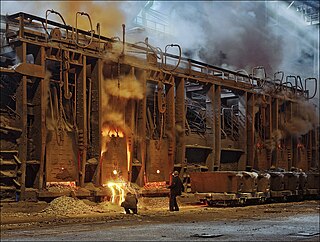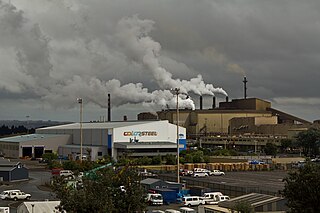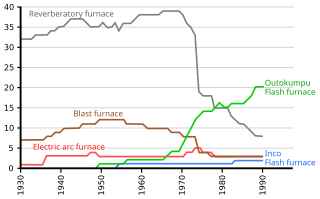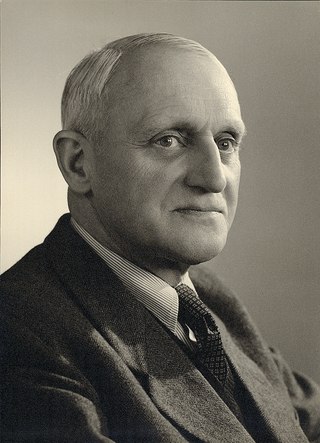
Steel is an alloy of iron and carbon with improved strength and fracture resistance compared to other forms of iron. Many other elements may be present or added. Stainless steels, which are resistant to corrosion and oxidation, typically need an additional 11% chromium. Because of its high tensile strength and low cost, steel is used in buildings, infrastructure, tools, ships, trains, cars, bicycles, machines, electrical appliances, furniture, and weapons.

Steelmaking is the process of producing steel from iron ore and/or scrap. In steelmaking, impurities such as nitrogen, silicon, phosphorus, sulfur and excess carbon are removed from the sourced iron, and alloying elements such as manganese, nickel, chromium, carbon and vanadium are added to produce different grades of steel.

Slag is a by-product of smelting (pyrometallurgical) ores and recycled metals. Slag is mainly a mixture of metal oxides and silicon dioxide. Broadly, it can be classified as ferrous, ferroalloy or non-ferrous/base metals. Within these general categories, slags can be further categorized by their precursor and processing conditions.

A blast furnace is a type of metallurgical furnace used for smelting to produce industrial metals, generally pig iron, but also others such as lead or copper. Blast refers to the combustion air being supplied above atmospheric pressure.

William Kelly, born in Pittsburgh, Pennsylvania, was an American inventor. He is credited with being one of the inventors of modern steel production, through the process of injecting air into molten iron, which he experimented with in the early 1850s. A similar process was discovered independently by Henry Bessemer and patented in 1855. Due to a financial panic in 1857, a company that had already licensed the Bessemer process was able to purchase Kelly's patents, and licensed both under a single scheme using the Bessemer name. Kelly's role in the invention of the process is much less known.

Basic oxygen steelmaking, also known as Linz-Donawitz steelmaking or the oxygen converter process, is a method of primary steelmaking in which carbon-rich molten pig iron is made into steel. Blowing oxygen through molten pig iron lowers the carbon content of the alloy and changes it into low-carbon steel. The process is known as basic because fluxes of burnt lime or dolomite, which are chemical bases, are added to promote the removal of impurities and protect the lining of the converter.

An open-hearth furnace or open hearth furnace is any of several kinds of industrial furnace in which excess carbon and other impurities are burnt out of pig iron to produce steel. Because steel is difficult to manufacture owing to its high melting point, normal fuels and furnaces were insufficient for mass production of steel, and the open-hearth type of furnace was one of several technologies developed in the nineteenth century to overcome this difficulty. Compared with the Bessemer process, which it displaced, its main advantages were that it did not expose the steel to excessive nitrogen, was easier to control, and permitted the melting and refining of large amounts of scrap iron and steel.

New Zealand Steel Limited is the owner of the Glenbrook Steel Mill, a steel mill located 40 kilometres south of Auckland, in Glenbrook, New Zealand. The mill was constructed in 1968 and began producing steel products in 1969. Currently, the mill produces 650,000 tonnes of steel a year, which is either used domestically or exported. Over 90% of New Zealand's steel requirements are produced at Glenbrook, while the remaining volume is produced by Pacific Steel, a steel recycling facility in Ōtāhuhu, Auckland. The mill is served by the Mission Bush Branch railway line, which was formerly a branch line to Waiuku. Coal and lime trains arrive daily. Steel products are also transported daily. The mill employs 1,150 full-time staff and 200 semi-permanent contractors.
Pyrometallurgy is a branch of extractive metallurgy. It consists of the thermal treatment of minerals and metallurgical ores and concentrates to bring about physical and chemical transformations in the materials to enable recovery of valuable metals. Pyrometallurgical treatment may produce products able to be sold such as pure metals, or intermediate compounds or alloys, suitable as feed for further processing. Examples of elements extracted by pyrometallurgical processes include the oxides of less reactive elements like iron, copper, zinc, chromium, tin, and manganese.

An ironworks or iron works is an industrial plant where iron is smelted and where heavy iron and steel products are made. The term is both singular and plural, i.e. the singular of ironworks is ironworks.

Shelton Bar was a 400-acre (1.6 km2) major steelworks in the city of Stoke-on-Trent, Staffordshire, England. In its heyday, Shelton Bar employed 10,000 in the steelworks, had five coal mines, a complete railway system, and a by-products processing factory.

Ferrous metallurgy is the metallurgy of iron and its alloys. The earliest surviving prehistoric iron artifacts, from the 4th millennium BC in Egypt, were made from meteoritic iron-nickel. It is not known when or where the smelting of iron from ores began, but by the end of the 2nd millennium BC iron was being produced from iron ores in the region from Greece to India, and sub-Saharan Africa. The use of wrought iron was known by the 1st millennium BC, and its spread defined the Iron Age. During the medieval period, smiths in Europe found a way of producing wrought iron from cast iron using finery forges. All these processes required charcoal as fuel.
Deoxidization is a method used in metallurgy to remove the oxygen content during steel manufacturing. In contrast, antioxidants are used for stabilization, such as in the storage of food. Deoxidation is important in the steelmaking process as oxygen is often detrimental to the quality of steel produced. Deoxidization is mainly achieved by adding a separate chemical species to neutralize the effects of oxygen or by directly removing the oxygen.

Flash smelting is a smelting process for sulfur-containing ores including chalcopyrite. The process was developed by Outokumpu in Finland and first applied at the Harjavalta plant in 1949 for smelting copper ore. It has also been adapted for nickel and lead production.

Robert Durrer (1890–1978) was a Swiss engineer who invented the basic oxygen steelmaking process during his career in Nazi Germany. The process was successfully tested by Durrer in 1948. A team led by Dr Theodor Eduard Suess in Austria adapted the process and scaled it to industrial size, after which it was commercialized by VÖEST and ÖAMG.

The ISASMELT process is an energy-efficient smelting process that was jointly developed from the 1970s to the 1990s by Mount Isa Mines and the Government of Australia’s CSIRO. It has relatively low capital and operating costs for a smelting process.

The Bottom-blown Oxygen Converter or BBOC is a smelting furnace developed by the staff at Britannia Refined Metals Limited (“BRM”), a British subsidiary of MIM Holdings Limited. The furnace is currently marketed by Glencore Technology. It is a sealed, flat-bottomed furnace mounted on a tilting frame that is used in the recovery of precious metals. A key feature is the use of a shrouded lance to inject oxygen through the bottom of the furnace, directly into the precious metals contained in the furnace, to oxidize base metals or other impurities as part of their removal as slag.
The AJAX furnace was a modification of the tilting open hearth furnace that used blown oxygen to improve productivity. The process was used in the UK during the 1960s at a time of transition from open hearth to oxygen-based steelmaking.

A metallurgical furnace, more commonly referred to as a furnace, is an industrial furnace used to heat and melt metal ore to remove gangue, primarily in iron and steel production. The heat energy to fuel a furnace may be supplied directly by fuel combustion, by electricity such as the electric arc furnace, or through induction heating in induction furnaces. There are several different types of furnaces used in metallurgy to work with specific metal and ores.

















